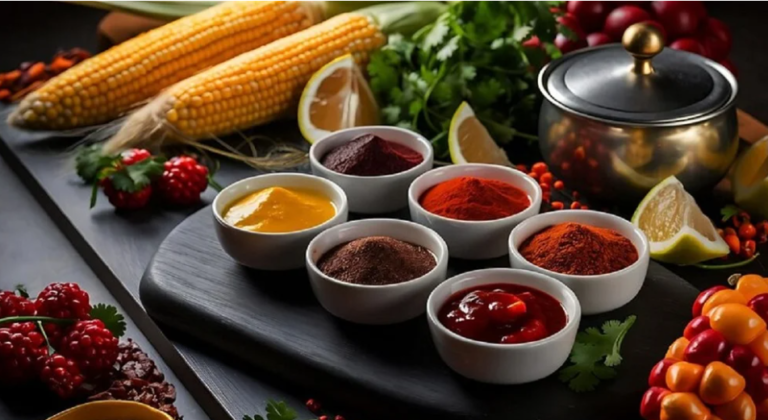Understanding Karingkarla:
Origins and Etymology
The term “Karingkarla” might sound exotic, but it carries significant weight in various cultural, nutritional, and medicinal contexts. Its roots trace back to ancient indigenous languages, reflecting its long-standing presence in human history.
Historical Background
Early Mentions and References:
It has been mentioned in ancient texts and folklore, often associated with healing and sustenance. Its journey from a wild plant to a cultivated crop underscores its adaptability and significance.
Evolution Over Time:
Over the centuries, it has evolved, adapting to various climates and regions. This adaptability allowed it to become a staple in many cultures, each adding its unique twist to its cultivation and use.
Cultural Significance
Role in Traditional Practices:
It holds a revered spot in traditional practices across cultures. It is used in rituals, symbolizing prosperity and health.
Symbolism in Various Cultures:
Different cultures imbue it with unique meanings. For some, it represents resilience and endurance, while for others, it symbolizes fertility and abundance.
Karingkarla in Modern Times
Contemporary Applications:
Today, it finds applications in various fields, from cuisine to cosmetics. Its versatility blends traditional knowledge with contemporary innovation.
Influence on Popular Culture:
Karingkarla’s journey from an obscure plant to a cultural icon is celebrated in literature, art, and media.
Geographical Distribution
It favors climates that support its growth, and specific regions have a rich history of cultivating this remarkable plant.
Environmental Conditions for Growth:
Understanding soil type, rainfall, and temperature is crucial for successful cultivation.
Botanical Characteristics
Distinctive Leaves and Flowers:
It is easily recognizable and appreciated for its aesthetic appeal.
– Growth Cycle:
From germination to maturity, the plant undergoes several stages.
Karingkarla’s Medicinal Potential
-
Anti-Inflammatory Properties:
Research suggests that it contains compounds with anti-inflammatory effects. These could be harnessed to alleviate conditions like arthritis and inflammatory disorders.
-
Antioxidant Benefits:
It is rich in antioxidants, which play a crucial role in neutralizing free radicals. Incorporating it into diets may contribute to overall health and longevity.
-
Immune System Support:
The plant’s bioactive compounds may enhance immune function. Regular consumption could bolster the body’s defense mechanisms.
-
Digestive Health:
It has been traditionally used to soothe digestive issues. Its fiber content aids digestion and promotes gut health.
-
Diabetes Management:
Some studies indicate that it may help regulate blood sugar levels. Further research is needed, but its potential as an adjunct therapy for diabetes is promising.
-
Skin Health:
Topical applications of Karingkarla extracts might benefit skin health due to its antioxidant and anti-inflammatory properties.
Challenges and Future Research
– Dosage and Safety: Determining optimal dosages and assessing any potential side effects are critical areas for further investigation.
– Bioavailability: Understanding how the body absorbs and utilizes it’s bioactive compounds is essential.
– Clinical Trials: Rigorous clinical trials can validate its efficacy and safety.
Embracing Karingkarla Globally: A Vision for Healing and Well-Being
In a world where modern medicine often relies on synthetic compounds and pharmaceutical interventions, the resurgence of interest in natural remedies is both timely and essential. Karingkarla, with its rich cultural heritage and promising health benefits, stands at the forefront of this movement.
-
Holistic Healing:
Imagine a future where it is seamlessly integrated into healthcare systems worldwide. From urban clinics to rural villages, practitioners prescribe Karingkarla-based formulations alongside conventional treatments. Its holistic approach addresses not only physical ailments but also mental and emotional well-being.
-
Community Gardens:
Picture vibrant community gardens in every neighborhood, where it thrives alongside other medicinal plants. These green spaces become hubs for education, healing, and connection. People gather to learn about cultivation, share recipes, and experience the therapeutic effects firsthand.
-
Global Collaboration:
Researchers, botanists, and healers collaborate across borders. They exchange knowledge about its unique properties, optimal growing conditions, and sustainable harvesting practices. International conferences celebrate breakthroughs and foster a sense of unity.
Karingkarla in Practice
-
Urban Wellness Cafés:
Trendy cafés serve Karingkarla-infused teas, tonics, and elixirs. Patrons sip their brews, discussing ancient wisdom and modern science. These cafés become cultural hubs, bridging generations and promoting well-being.
-
Karingkarla Retreats:
Imagine serene retreat centers nestled in natural landscapes. Participants immerse themselves in its workshops, meditation, and forest bathing. The healing power of nature combines with its essence, rejuvenating mind, body, and spirit.
-
Eco-Friendly Packaging:
Companies adopt sustainable packaging for its products. Biodegradable containers, reusable pouches, and minimalistic designs reduce environmental impact. Conscious consumers appreciate the harmony between healing and Earth care.
Challenges and Opportunities
-
Scientific Validation:
Rigorous studies validate Karingkarla’s efficacy. Clinical trials explore its potential in treating specific conditions. Researchers collaborate to unlock its secrets, ensuring evidence-based integration.
-
Cultural Preservation:
As it gains global recognition, cultural sensitivity is crucial. Indigenous communities lead the way, sharing their wisdom while safeguarding traditions. Respectful collaboration ensures authenticity.
-
Accessible Education:
Schools teach children about its role in health. Curricula blend science, folklore, and practical skills. Young minds grow up appreciating both laboratory discoveries and ancestral knowledge.
Conclusion
The future of healing lies in embracing Karingkarla—a bridge between ancient wisdom and modern progress. As we cultivate, consume, and celebrate this remarkable plant, we weave a tapestry of well-being that transcends borders and heals our planet.
FAQs
-
What is Karingkarla?
It represents a spiritual and geographical anchor for the Kaurna people, the traditional owners of the Adelaide Plains. It embodies their profound relationship with the land, reflecting their understanding of place and identity.
-
What are the origins of Karingkarla?
Its origins date back centuries, rooted in ancient practices that honored the cycles of life, seasons, and natural elements. Indigenous communities pass down this tradition through generations, preserving wisdom and cultural heritage.
-
What ceremonies and rituals are associated with Karingkarla?
– Ceremonies related to it involve giving thanks to the Earth for its abundance and sustenance. Offerings of food, dance, song, and prayers honor the interconnectedness between nature and humanity. Traditional instruments like clapsticks and didgeridoos create a harmonious atmosphere during these rituals.
-
How has colonization impacted Karingkarla?
– Colonization disrupted Indigenous practices, but efforts to preserve and revive it traditions continue. Cultural sensitivity and collaboration are essential to ensure authenticity and respect for ancestral knowledge.
-
Why is Karingkarla relevant today?
It remains relevant as a bridge between ancient wisdom and modern society. Its enduring legacy inspires healing, unity, and stewardship of the environment.












+ There are no comments
Add yours